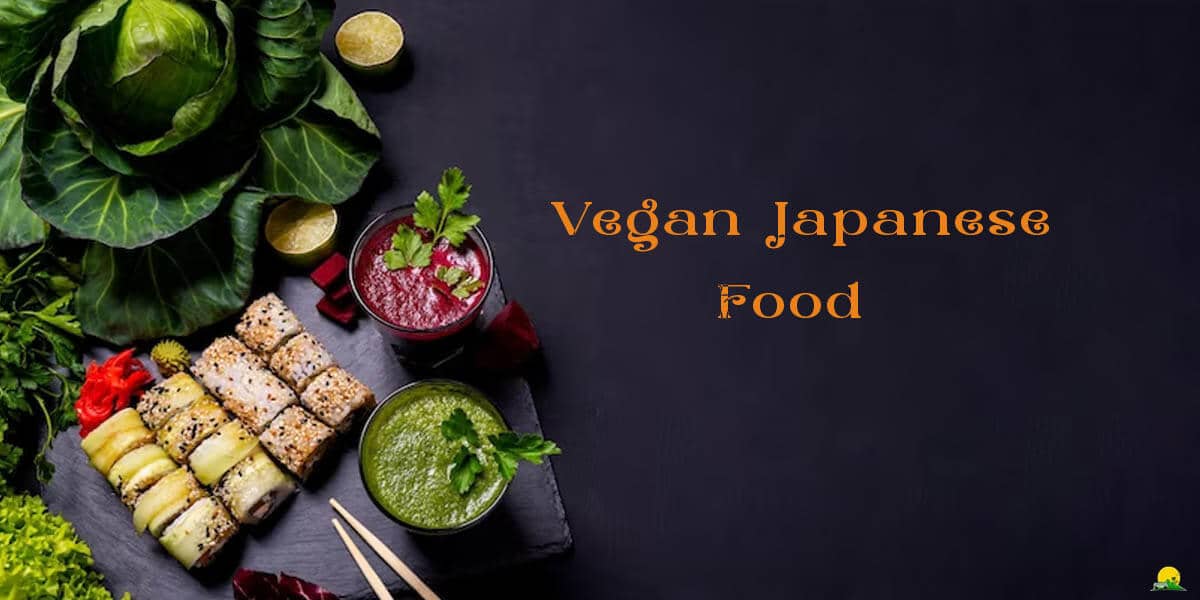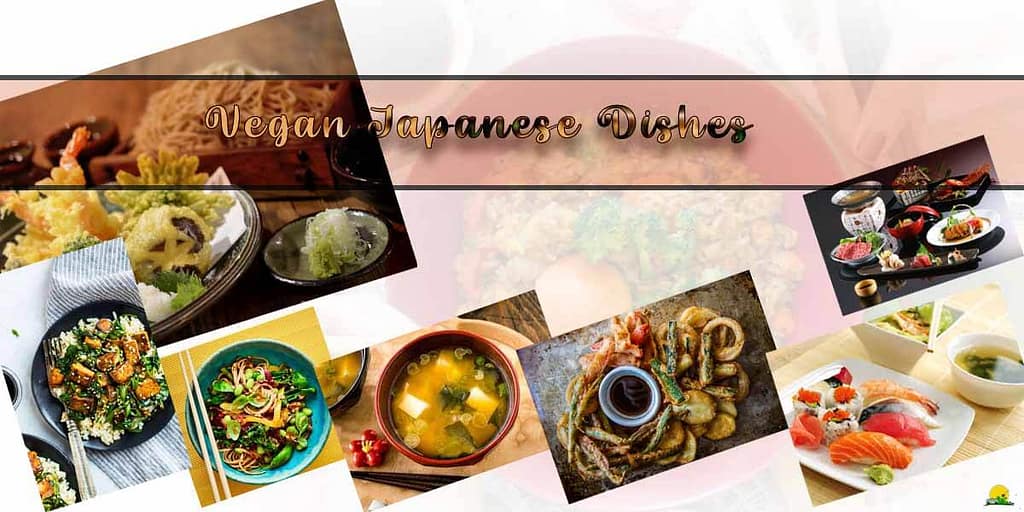Exploring Vegan Japanese Food in the Land of the Rising Sun

Exploring Vegan Japanese Food in the Land of the Rising Sun
Japan is renowned worldwide for its rich culinary traditions and innovative cuisine. However, navigating Japanese dining can seem intimidating at first glance for vegans and vegetarians. Meat, seafood, and fish-derived products like dashi stock play prominent roles in many classic Vegan Japanese Foods. However, a closer look reveals that veganism has deeper roots in Japanese culture than expected. Buddhism and Shintoism have long promoted more compassionate, plant-focused diets. Additionally, regional specialties from across the country offer tasty plant-based options. With some knowledge and planning, vegan travelers can experience the full spectrum of Japanese flavors.
index
ToggleVegan Roots in Japanese Culture and Cuisine
Contrary to common assumptions, meat, and animal products were not always dietary staples in Japan. Before widespread Western influence in the late 1800s, the traditional Japanese diet centered around grains like rice and buckwheat, vegetables, mushrooms, seaweed, and soy foods. Buddhism and Shintoism, the dominant religions, promoted compassionate, plant-focused diets that avoided harming sentient beings.
Some Japanese rulers had even banned cattle farming and meat consumption. With limited land for grazing or growing feed crops, they viewed animal agriculture as an inefficient use of natural resources. During periods of famine or rice shortages, Buddhist teachings also discouraged consuming grains that could instead feed hungry people.
This plant-centric culinary heritage still influences Japanese cuisine today. Many classic dishes like miso soup, tofu, vegetables, and seaweed-based preparations date back centuries. Traditional Buddhist temple cuisine known as shoji ryori remains wholly Vegan Japanese Food, using ingredients like yuba (tofu skin) in creatively prepared dishes. Some regional specialties from areas with less fertile land, like the mountainous Nagano prefecture, naturally evolved to center around grains and vegetables.
While meat and dairy became more common dining staples in the late 1800s, vegan and vegetarian principles of nonviolence and environmental sustainability still hold meaning in Japanese culture. Even at family meals, it’s customary to say “itadakimasu” or “I humbly receive” before eating – expressing gratitude to the plants and animals that nourished the food. With its deep vegan roots and focus on mindfulness at meals, Japan offers vegans a culturally rich place to explore plant-powered cuisine.
Popular Vegan Japanese Dishes and Regional Specialties

Now let’s dive into some classic Vegan Japanese Food and regional cuisines you’ll find throughout Japan:
Miso soup: A mainstay of Japanese home cooking, miso soup requires a stock made from fermented soybean paste called miso. While fish-derived dashi stock is commonly used, vegetable or mushroom-based versions are widely available.
Tofu: Silken tofu, firm tofu blocks, dried aburaage tofu, and fresh yuba (tofu skin) are celebrated ingredients in homestyle cooking and haute cuisine.
Vegetable tempura: Lightly battered seasonal vegetables like sweet potatoes, mushrooms, and greens are a popular tempura item at restaurants.
Sushi: Rice topped with avocado, cucumber, pickled daikon radish, or seaweed like nori is a vegan sushi staple. Look also for inarizushi, which is made with deep-fried tofu pouches.
Noodles: Both soba (buckwheat) and udon (wheat) noodles are often served plain with dipping sauce or in vegetable-forward broths without fish-based dashi stock.
Onigiri: These triangular rice balls wrapped in nori seaweed commonly contain umeboshi pickled plums or soybean paste fillings.
Okonomiyaki: A savory pancake that sometimes contains eggs but can easily be made Vegan Japanese Food with shredded cabbage, carrots, onions, and vegan Worcestershire-style sauce.
Ochazuke: Green tea is poured over rice and mixed with pickled vegetables, nori, or umeboshi for a light meal.
Now let’s explore some top regional vegan specialties across Japan:
Kansai Region (Osaka, Kyoto, Nara):
- Shojin ryori Buddhist temple cuisine prepared without animal products
- Kansai-style okonomiyaki with a thicker batter and less focus on eggs
- Oshokoji mochi rice cakes made from adzuki bean paste
Tokyo Specialties:
- Edamame soybeans as an izakaya snack
- Vegetable gyoza dumplings
- Mochi rice cakes in flavors like cherry blossom
Nagano (Japanese Alps):
- Sobagaki buckwheat noodles served with vegetables
- Sansai mountain vegetables foraged in spring and fall
- Oyaki stuffed dumpling pancakes made from soba flour
Okinawa:
- Tocuyo fermented tofu relish
- Mugi miso fermented barley miso
- Goya chanpuru stir fry with bitter melon
Hokkaido:
- Japanese curry made with vegetables instead of meat
- Fresh shiitake mushrooms
- Local vegetables like pumpkin and burdock root
By exploring these regional delights, vegan visitors can fully immerse themselves in Japan’s incredible culinary diversity. The following section provides tips for enjoying plant-powered Japanese meals wherever you travel.
Navigating Vegan Japanese Food

Now that we’ve covered the history and top vegan dishes, here are some practical tips for finding and enjoying vegan meals during your travels:
- Download the Happy Cow app for listings of vegan and vegetarian restaurants nationwide. Major cities like Tokyo and Kyoto have many dedicated options.
- At standard restaurants, start by saying “Bejitarian desu” (I’m a vegetarian) to convey you don’t eat meat. Then, show a note (see below) explaining vegan dietary needs.
- The note should politely ask if dishes can be made without meat, eggs, dairy, or dashi stock. Offer to pay more if special preparation is required.
- Common ingredients like miso paste are usually vegan, but check labels since some contain fish or other animal products. Avoid products containing dashi, honey, or gelatin.
- Convenience stores sell packaged onigiri, inari sushi, veggie bento boxes, snacks, and drinks marked as vegan.
- Many traditional temples and shrines sell vegan mochi, sembei crackers, or other treats as offerings.
- Learn basic phrases like “Oishii desu!” (It’s delicious!) to build rapport with restaurant staff.
- Ask if seaweed or vegetable-based dashi stock can replace fish-derived dashi in soups and sauces.
- Cooking classes provide a fun way to learn vegan Japanese recipes and sample homemade dishes.
Follow Japanese vegan Instagrammers like @vegan_japan and @vegan_japan_official for local product finds and dining spots off the beaten path.
Read More: Mouthwatering Street Food You Must Try in Turkey
A Sample Vegan Note in Japanese:
私はベジタリアン(菜食主義者)です。肉や魚介類、乳製品、卵は食べられません。 代わりに野菜、豆類、海藻などの植物性の食べ物が食べられます。 料理の出汁が魚介類ではなく、海藻などの植物性の材料で作られているか確認できますか。 特別な調理が必要なら追加料金を支払います。 ご理解とご協力をよろしくお願いいたします。
With these tips and resources, vegan travelers can feel well-prepared to experience Japan’s diverse culinary offerings. The focus shifts from limitations to discoveries and cultural appreciation through food. Overall, with an open and curious mindset, Japan offers vegans a uniquely rich dining adventure.
Conclusion
Although meat and dairy have grown more common in modern Japan, the country’s culinary traditions have deep Vegan Japanese Food roots in Buddhism and regional heritage. With some knowledge of cultural practices and essential plant-based dishes across regions, vegan visitors can fully immerse themselves in the Japanese dining experience.
From traditional temple cuisine to contemporary izakaya fare, Japan innovates new vegan preparations for seasonal produce. Following basic etiquette like using the helpful phrase sheet, vegans report warm welcomes from chefs eager to showcase their culinary skills.
Recent Posts
Contact Us
+1 437 499 4559










